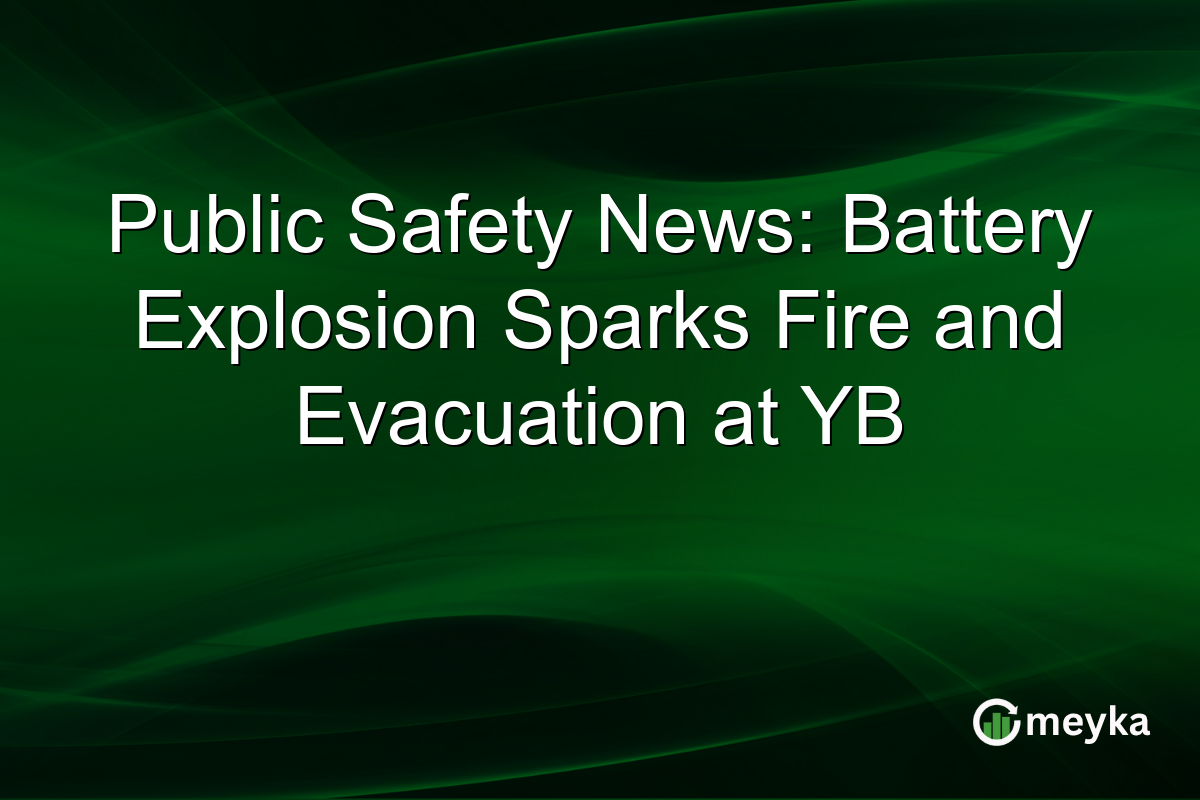Public Safety News: Battery Explosion Sparks Fire and Evacuation at YB
A recent incident in Block 756 Yishun reminds us of the urgent need for robust battery explosion safety measures. A battery from a personal mobility aid (PMA) exploded, igniting a fire that forced the evacuation of 25 residents. This situation underscores the growing risks associated with PMA batteries, especially when non-original parts are used. With increasing reliance on these devices, understanding and implementing battery safety regulations is more critical than ever.
Understanding the Incident: What Happened?
On October 18, a battery explosion from a PMA in Block 756 Yishun caused a fire, necessitating the emergency evacuation of 25 residents. The blaze originated from a mobility aid battery which was reportedly not using original parts, emphasizing the dangers of unauthorized modifications. Fortunately, there were no reported injuries, but the incident caused significant concern among residents and highlighted the potential risks associated with battery fires in densely populated areas.
Source from Sammyboy provides further information on community reactions.
This event brings attention to the importance of adhering to manufacturers’ guidelines for battery use and the dangers of cutting corners.
Risks of Non-Original Battery Parts
Using non-original parts in PMAs can substantially increase the risk of battery explosions and fires. These components often fail to meet safety standards, leading to overheating and eventual failure. The Yishun incident serves as a stark reminder of these risks. Battery fires not only threaten life and property but also challenge emergency services tasked with managing such high-risk situations.
The global rise in PMA usage calls for stricter enforcement of safety regulations, ensuring all parts meet industry standards to protect users and bystanders from harm.
The Need for Robust Battery Safety Regulations
The explosion has reignited conversations about battery safety measures and regulations. Currently, regulations surrounding the use of PMA batteries are fragmented, with some regions lacking comprehensive guidelines. Authorities, such as the Singapore Civil Defence Force, emphasize proper maintenance and use of original battery parts to mitigate risks.
Looking ahead, the implementation of stringent global standards is crucial. These regulations should mandate regular inspections and certifications, ensuring all batteries in personal and commercial use are safe and reliable. Enhanced consumer education can also play a crucial role in preventing future incidents.
Implications for Fire Safety Measures
This event underscores the need for effective fire safety measures in residential areas. Ensuring adequate fire prevention infrastructure is in place can significantly reduce risks associated with battery fires. This includes installing smoke detectors, providing accessible evacuation routes, and conducting regular safety drills.
Communities must also be well-informed about emergency protocols to ensure quick and efficient responses to incidents like the Yishun fire. By combining rigorous regulations with community preparedness, future risks can be minimized.
Final Thoughts
The Yishun battery explosion is a wake-up call highlighting the critical importance of battery explosion safety. It underscores the risks posed by non-original battery parts and the urgent need for stringent regulations. Moving forward, stakeholders must collaborate to enforce high safety standards and spread awareness about battery maintenance and fire safety practices. As the use of personal mobility aids continues to grow, so does the responsibility to ensure these devices are safe and compliant. By combining regulatory oversight with informed user practices, we can reduce the incidence of such hazardous events and protect our communities.
FAQs
The explosion was caused by a battery from a personal mobility aid which reportedly was not using original parts, leading to a fire and evacuation of residents.
Non-original parts can lack safety standards, leading to overheating and failure, increasing the risk of explosions and fires, as seen in the Yishun incident.
Safety can be improved by enforcing strict regulations, ensuring the use of original and certified parts, conducting regular inspections, and educating users on best practices.
Disclaimer:
This is for information only, not financial advice. Always do your research.






